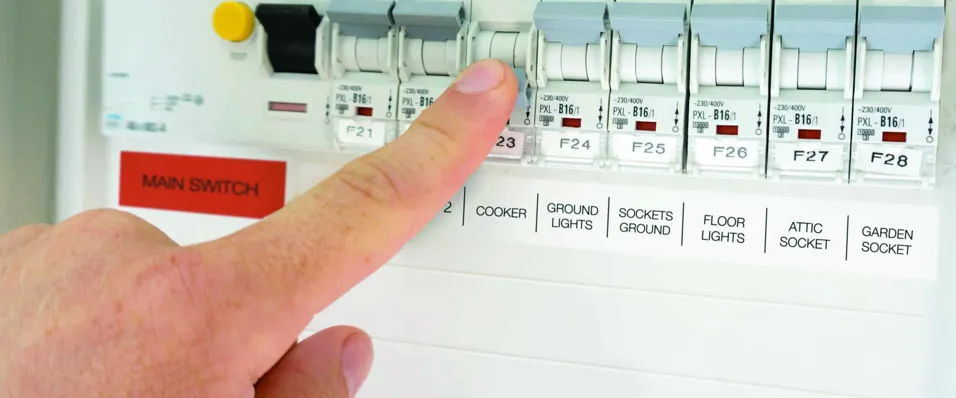
Getting important labelling right leaves a lasting impression
In fact, it is so important that an entire section of the Requirements for Electrical Installations, IET Wiring Regulations* is dedicated to it.
Section 514*, entitled ‘Identification and Notices’, provides clear instruction, with label illustrations, that are supported by UK Health and Safety Law. A correctly labelled installation looks more professional and complies with the regulations. The immediate benefit to the customer is easy identification of well-labelled switchgear, that makes circuit isolation and protection both quick and accurate.
Historically label creation has been a time consuming and arduous task. It used to involve a labeller, a pair of scissors, a lot of wasted tape offcuts and no small amount of frustration to make labels fit distribution boards, sockets, switches, trunking, conduit and equipment. As technology developed things became easier with semi-automated labellers sizing text to fit distribution boards, cables and pattress boxes. Whilst these printing devices made life easier, they tended to demand multi-step button-pushing processes to achieve the desired result. So, while you could create and print on-site, for convenience, using earlier electronic labellers would still require more time and effort compared to today’s portable label makers.
With correct identification potentially saving injury or, in serious cases, life, the scope of labelling within the Wiring Regulations goes beyond Section 514*. For example, the introduction of the 18th edition*, Section 534.4.1.7, states that the presence of Surge Protection Devices (SPDs) installed downstream of a distribution board (e.g. in a socket-outlet) shall be permanently indicated at, or near, the distribution board. Subsequently, the client needs to check the SPD periodically, in a similar fashion to the periodic RCD test, to ensure the device is still effective. Whilst a label is not specifically required by this regulation, an easy, clear and professional way to indicate the periodic check, would be to place a durable label on or near to the board.
Using an intuitive smart-phone app with your labelling device, connected using seamless Bluetooth, allows you to quickly create new labels, store them and recall for future editing and printing. Seeing a life-sized image of the label before printing eliminates extra tape waste, saves time and helps to ensure the label meets current Regulations, whilst also being easy and convenient to complete.
Epson LabelWorks printers have been specifically designed for electrical applications. To find out more visit https://labelworks.epson.com/ or come along to one of the forthcoming NAPIT Expo events and visit the Epson stand.
*Requirements for Electrical Installations, IET Wiring Regulations 18th Edition BS 7671:2018
